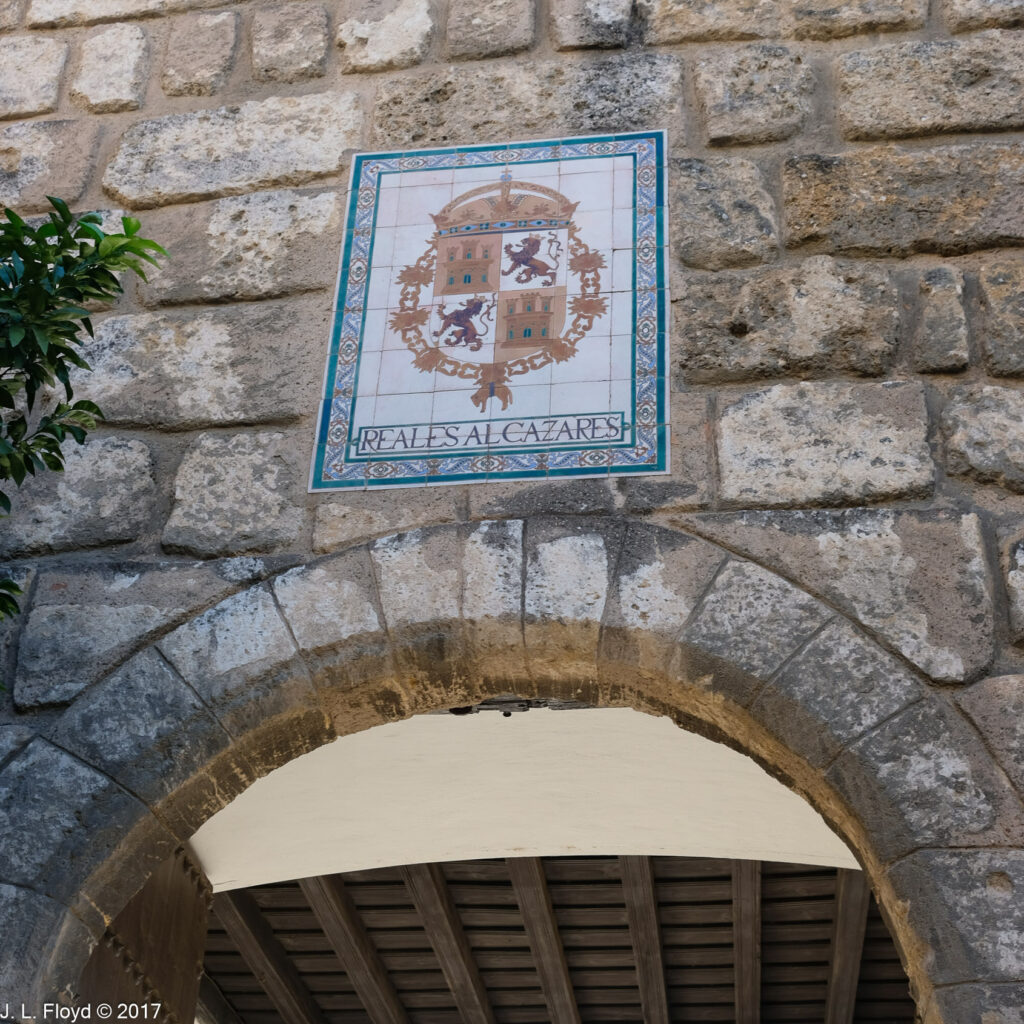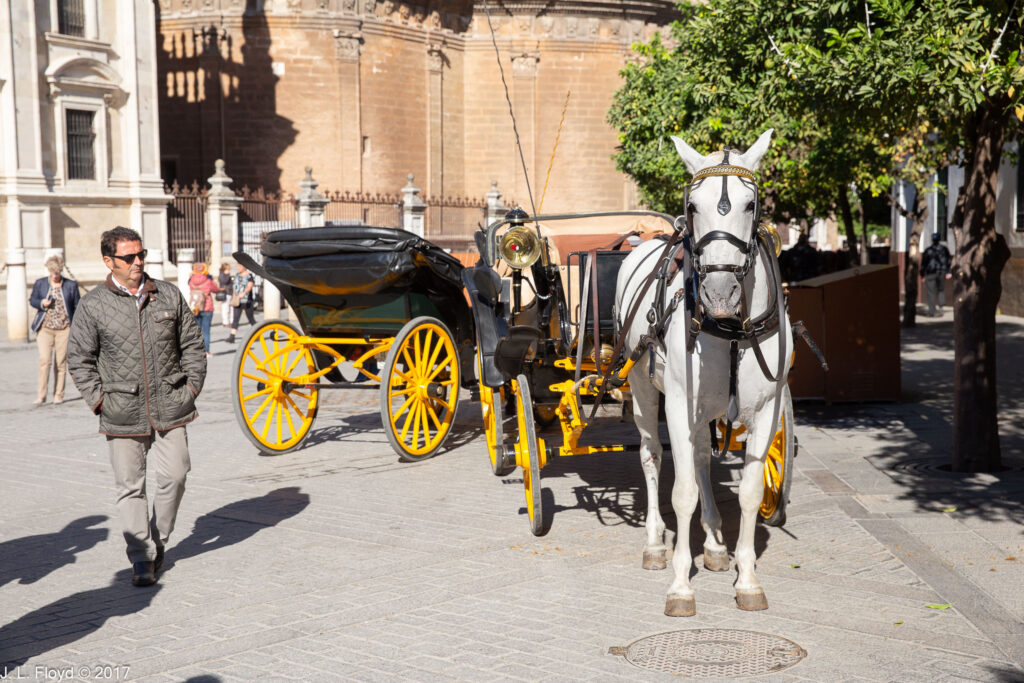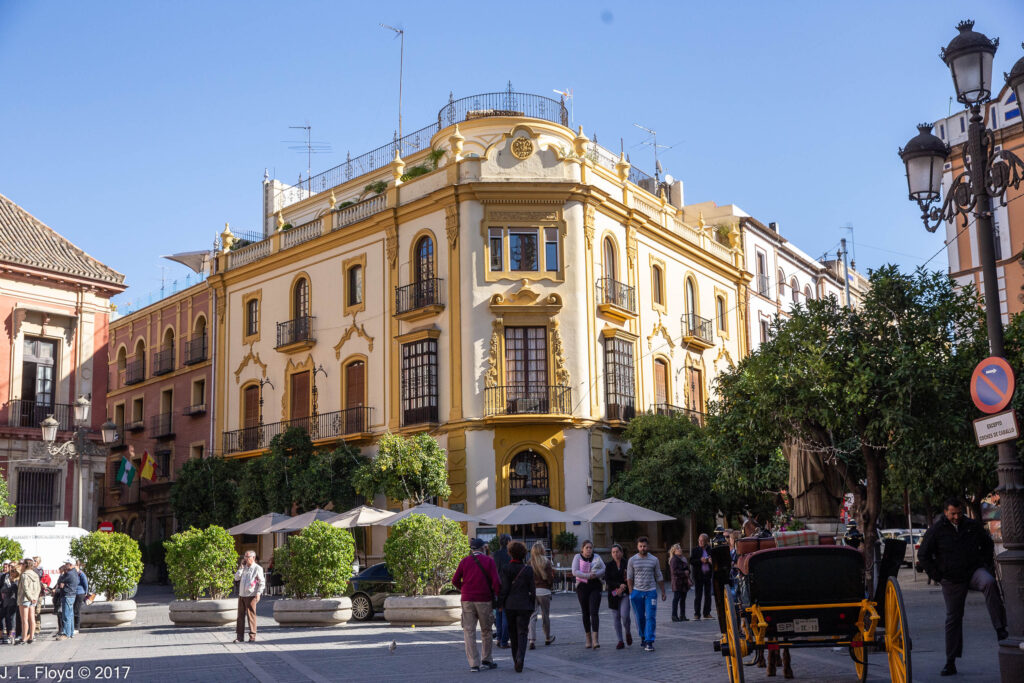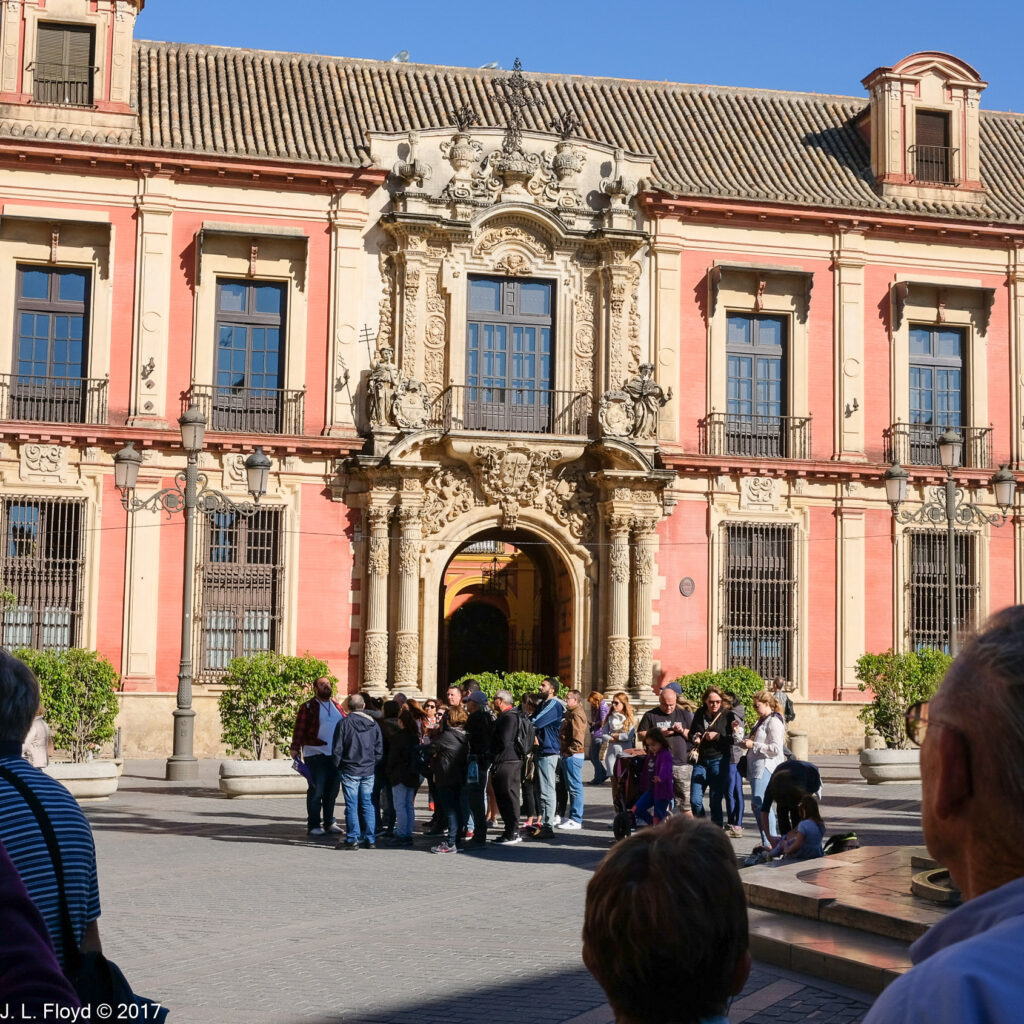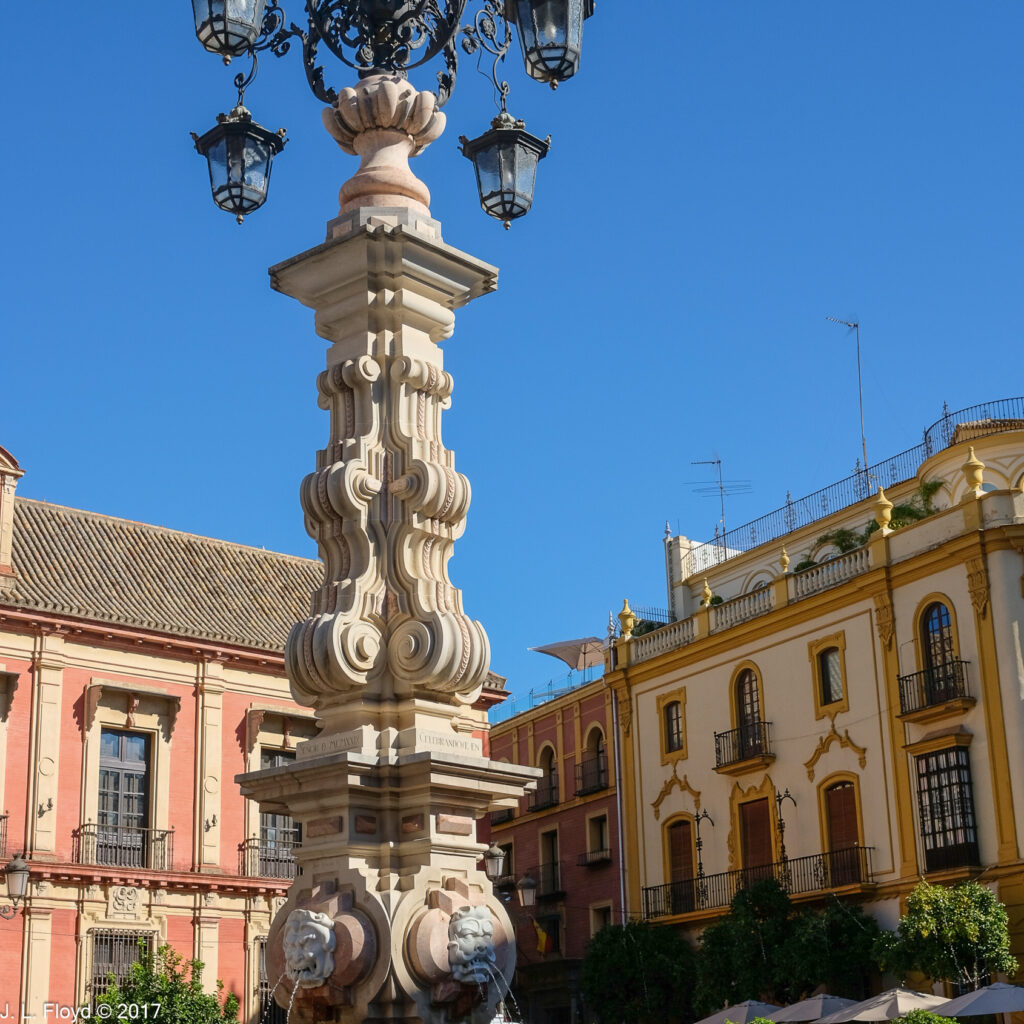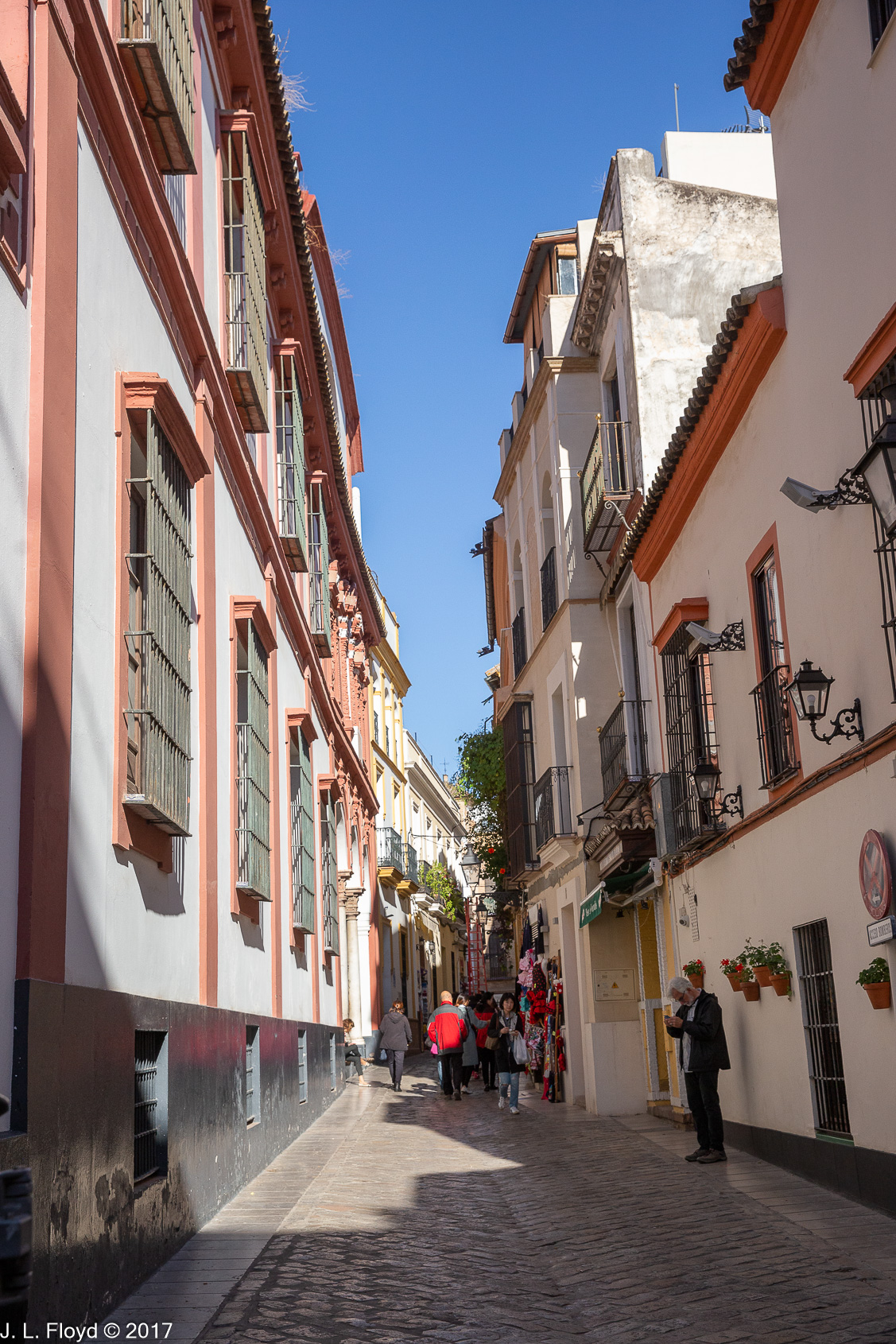In 1248 CE, the Castilian monarch Ferdinand III completed a key step in the Reconquista of Spain from the Muslims by taking the city of Seville. There was a large Jewish population in Seville at that time, and in the following years it became concentrated in a particular quarter of the city known as the Judería. Later, after the expulsion of the Jews by Ferdinand and Isabella in 1492, the former Judería became known as the Barrio (neighborhood) de Santa Cruz after a church of that name which was located there. There is still a street in the Barrio named the Calle Judería.
The Barrio Santa Cruz today preserves much of its medieval character; it is a labyrinth of narrow cobbled streets with closely packed three- or four-story houses towering over them, opening at times into small plazas planted with orange trees. We entered the Barrio from the Murillo Gardens, named for the 17th-century Baroque painter Bartolomé Esteban Murillo. At our point of entry we encountered a fragment from the old city wall, dating from the eleventh or twelfth century, when Seville was still under Muslim control, with sections of two conduits running through it to supply water to the city. Once inside the Barrio, we threaded our way through the narrow streets, lined solidly with houses two or three stories tall, many with overhanging balconies, with so little space between the two sides that you could reach across to your neighbors across the street and shake hands with them from the upper stories. This arrangement has its advantages; the tall houses provide shade from the fierce Seville summer sun. But since the streets are limited to pedestrian traffic, one wonders how provisions and supplies are conveyed to the houses – let alone the numerous cafes, bars and hotels located inside the Barrio.
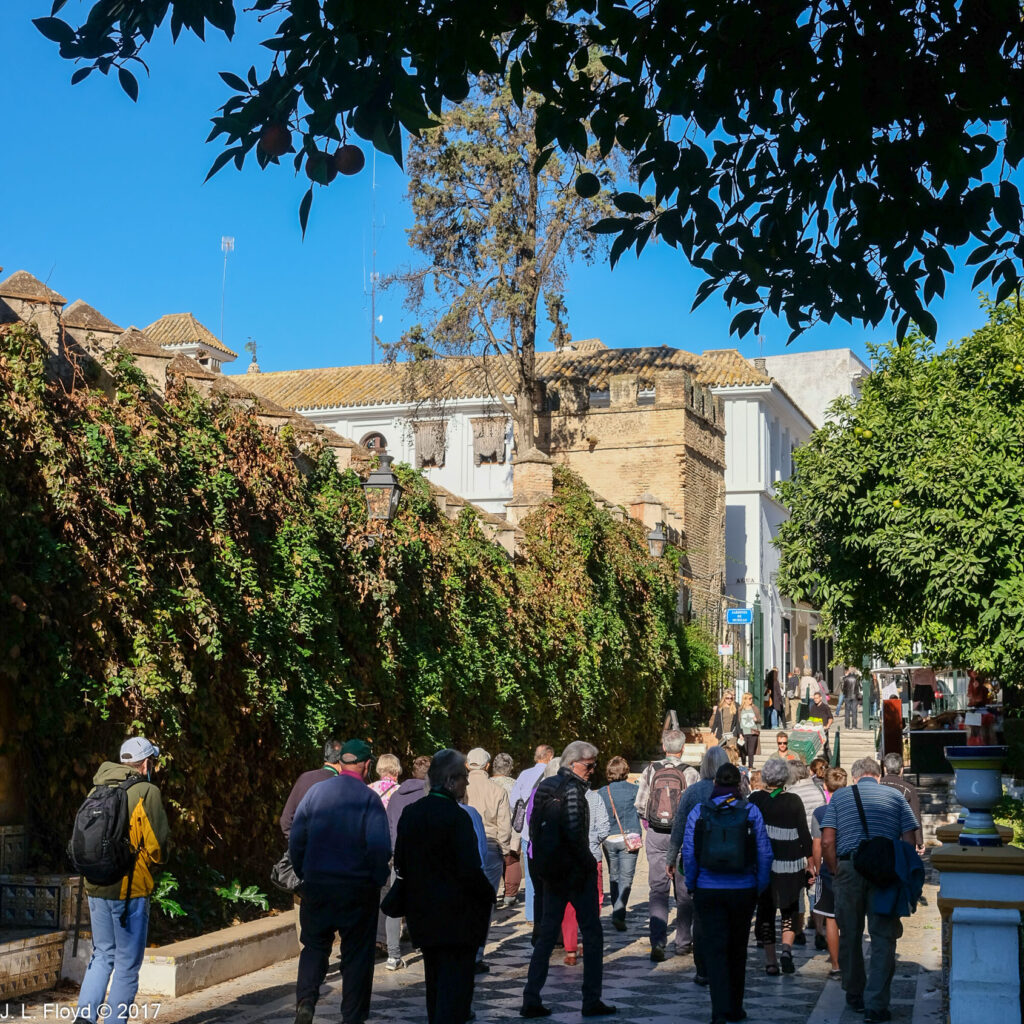
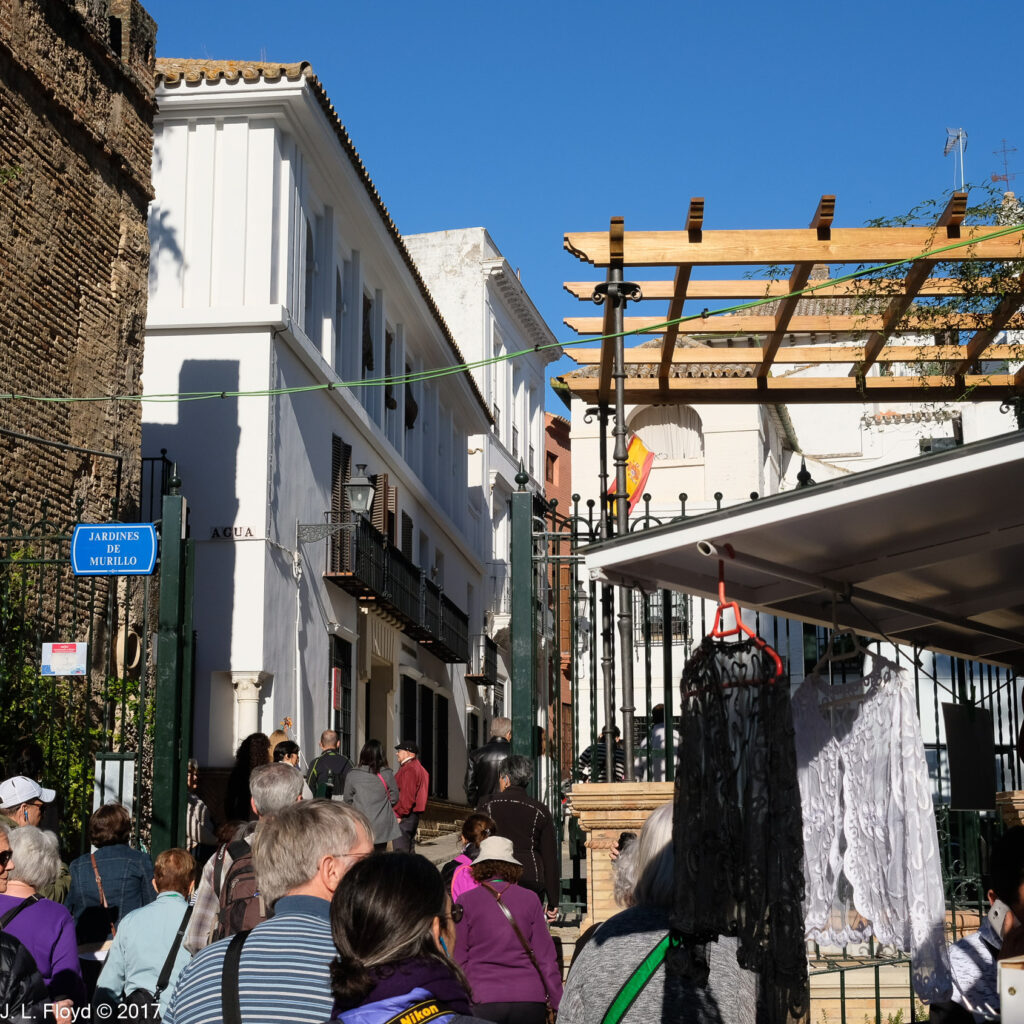
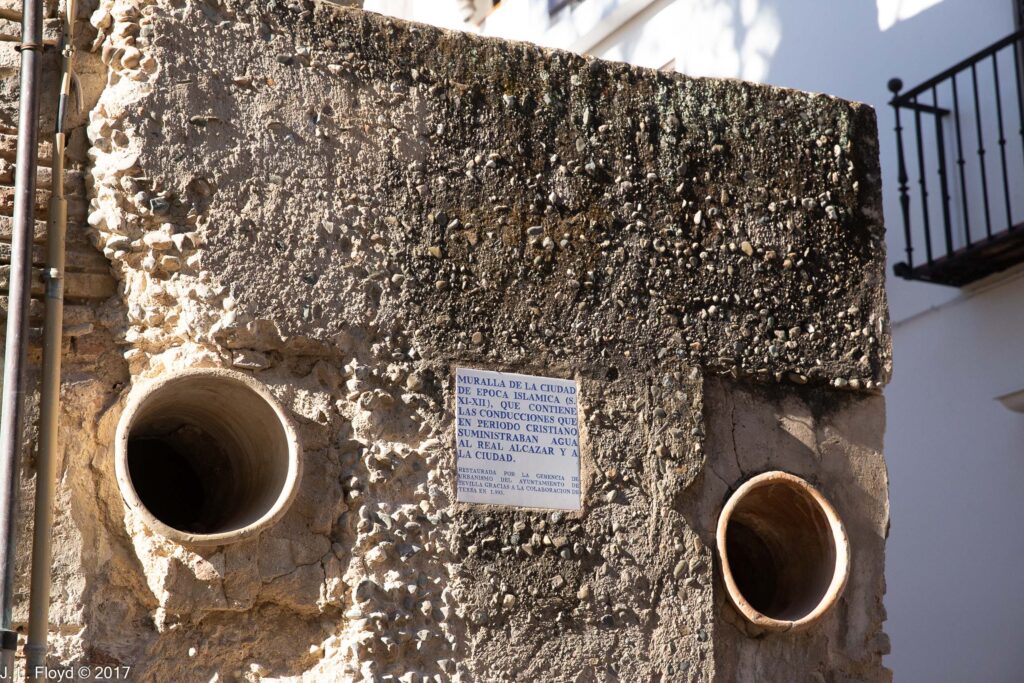
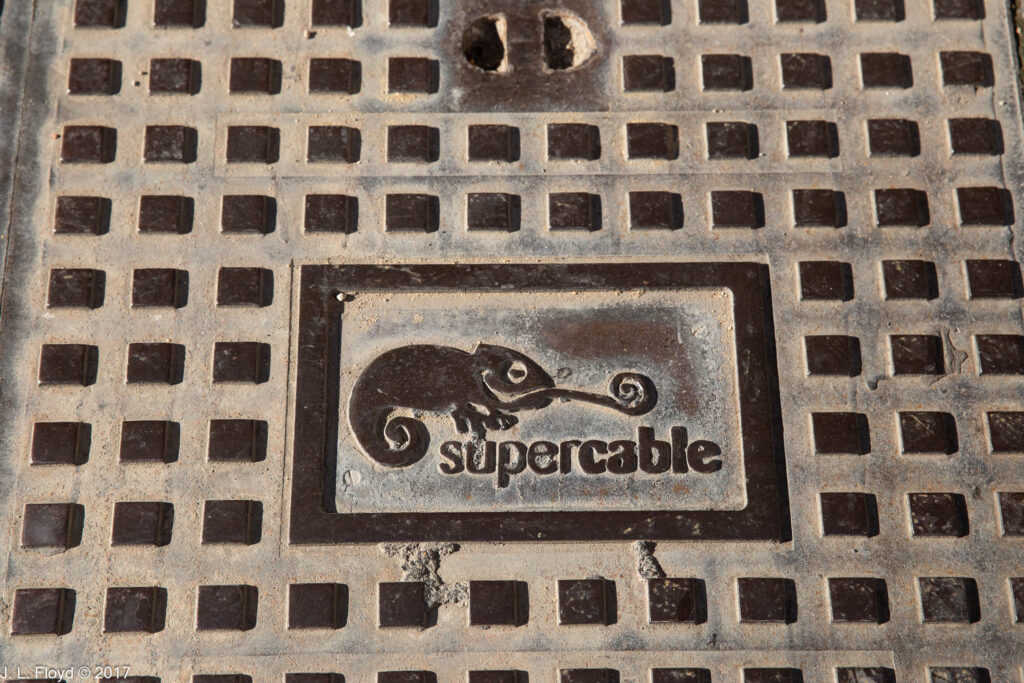
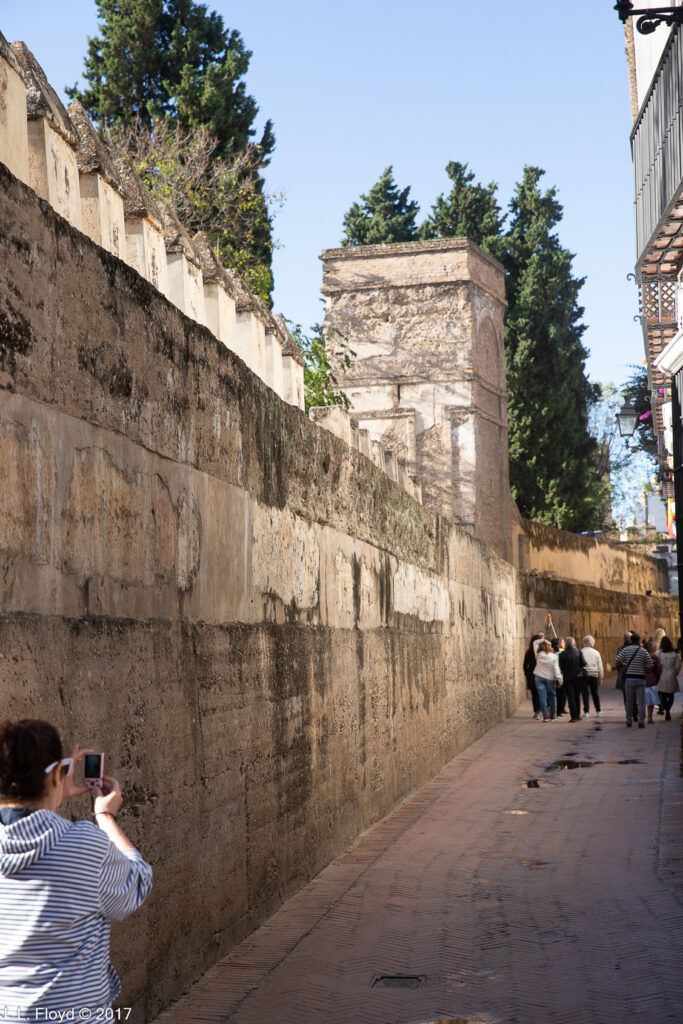
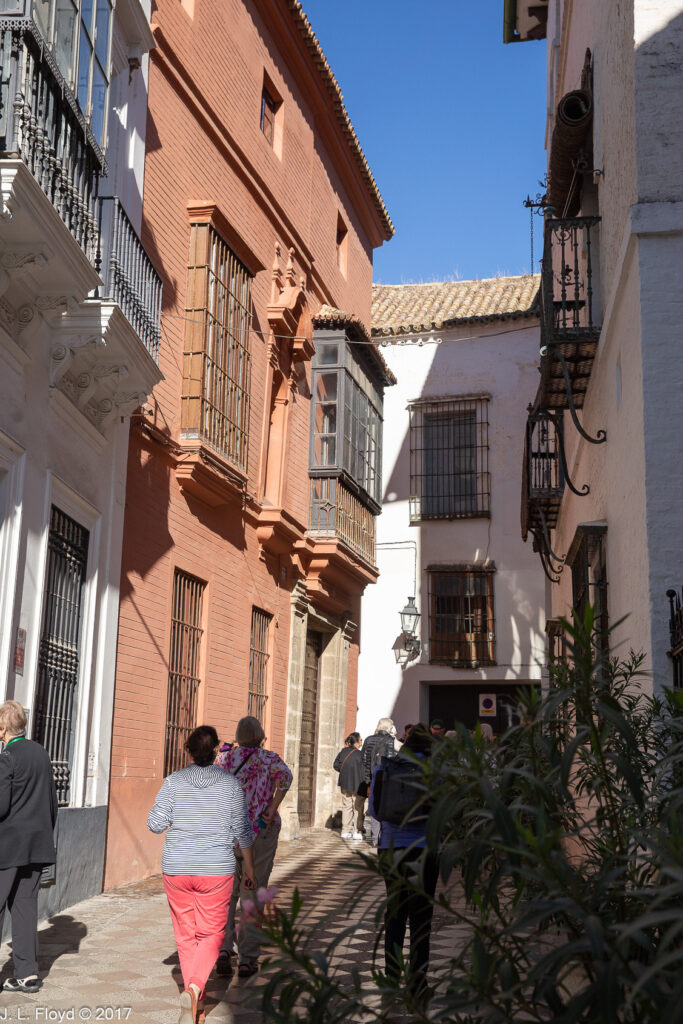
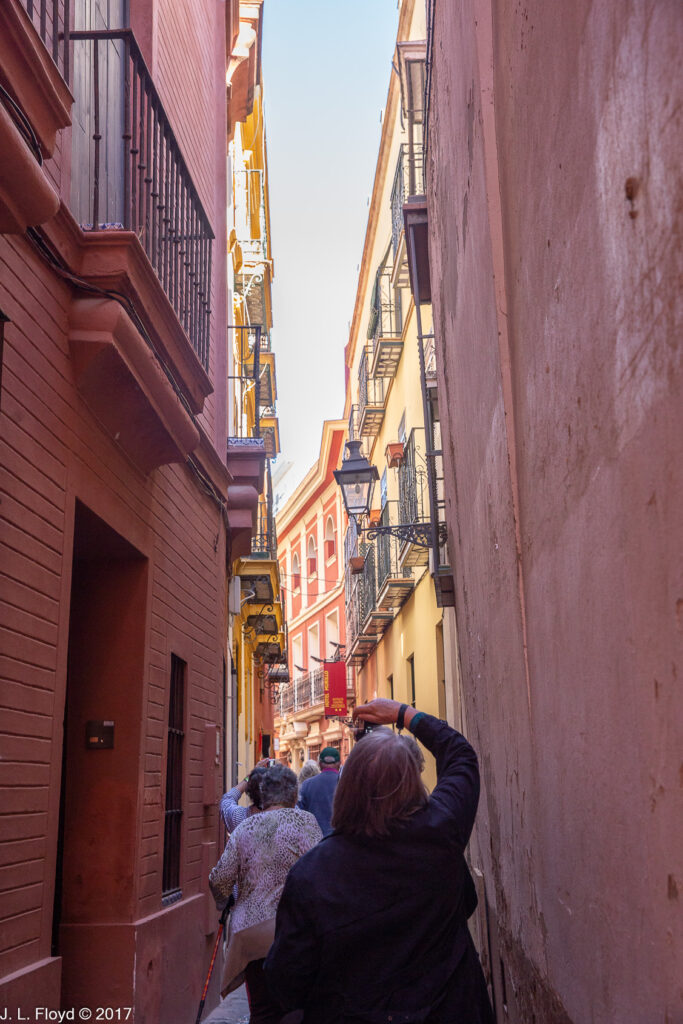
In a little while we arrived at the Plaza de los Venerables, where we found a choice of cafes to stop for a snack. It is also the location of the Hospital de Venerables Sacerdotes, a Baroque building which was originally built in the 17th century as a residence for elderly, poor and disabled priests. It is now the headquarters of a cultural foundation which maintains the historic property and operates an art gallery, the Velázquez Center, devoted to exhibiting paintings by Diego Velázquez and other eminent Spanish painters. Unfortunately it was not open on the day we visited.
On the wall of a house in or near the Plaza de los Venerables I came across a tile plaque which announces that according to popular belief, this was the birthplace of Don Juan Tenorio, a notorious rake and libertine who became the protagonist in two famous Spanish plays, one from the 17th century and the other written much later, in 1844. The earlier play provided the inspiration for Mozart’s 1787 opera Don Giovanni. There is a statue of Don Juan in another square, the Plaza de los Refinadores, but that was not on our route.

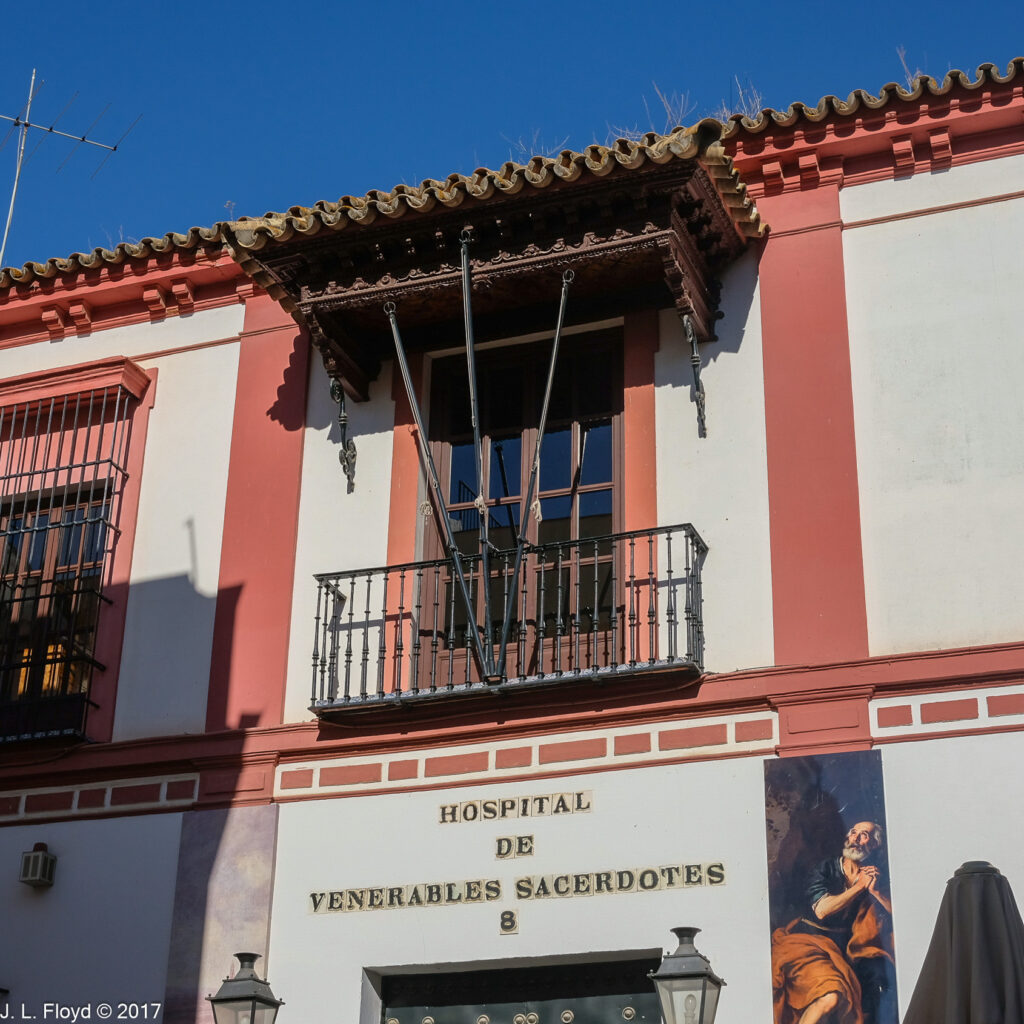
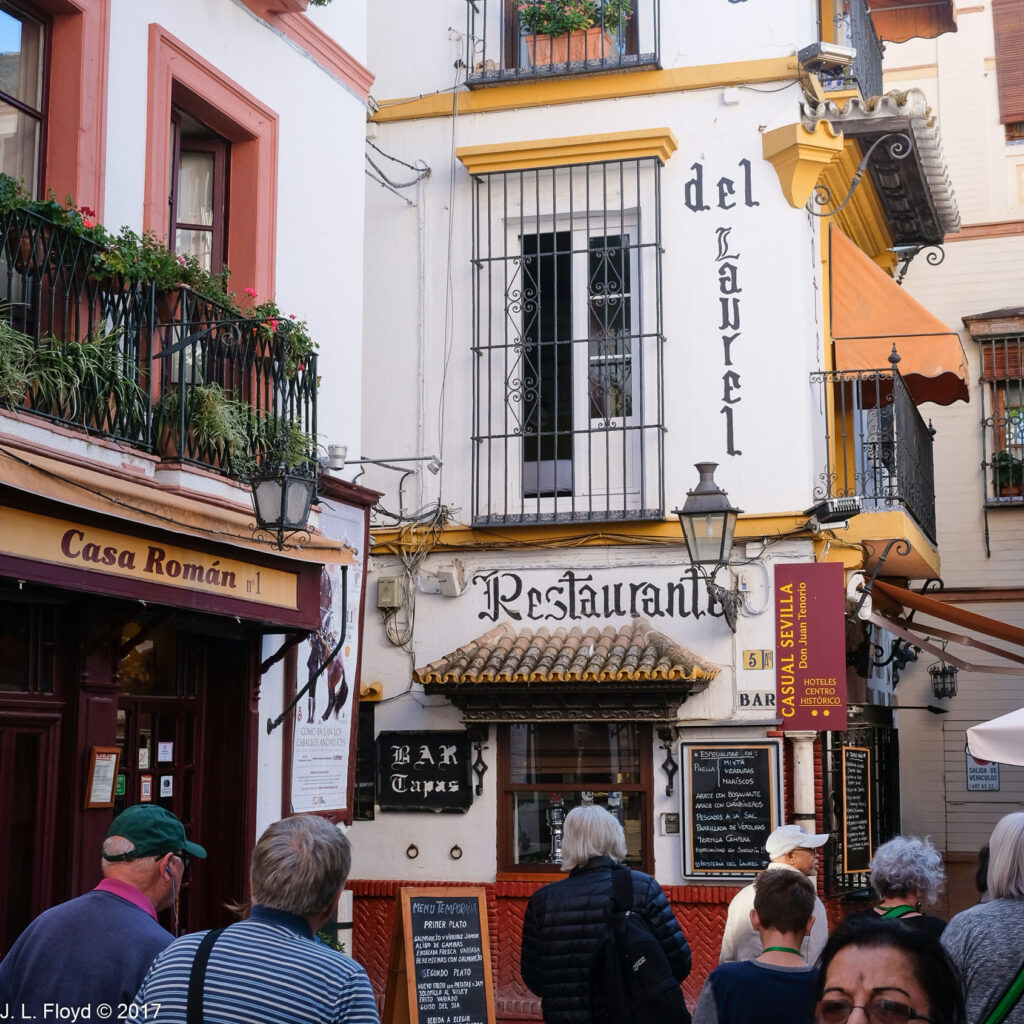
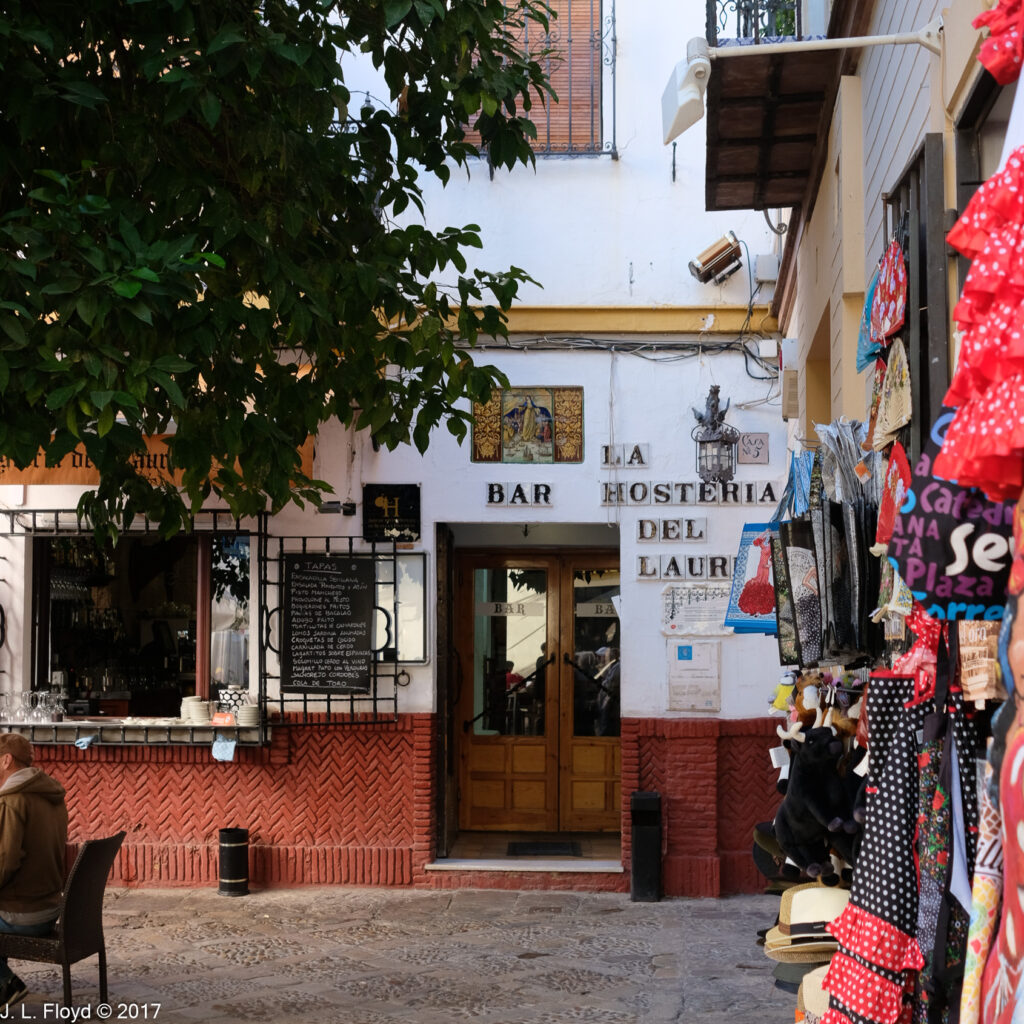
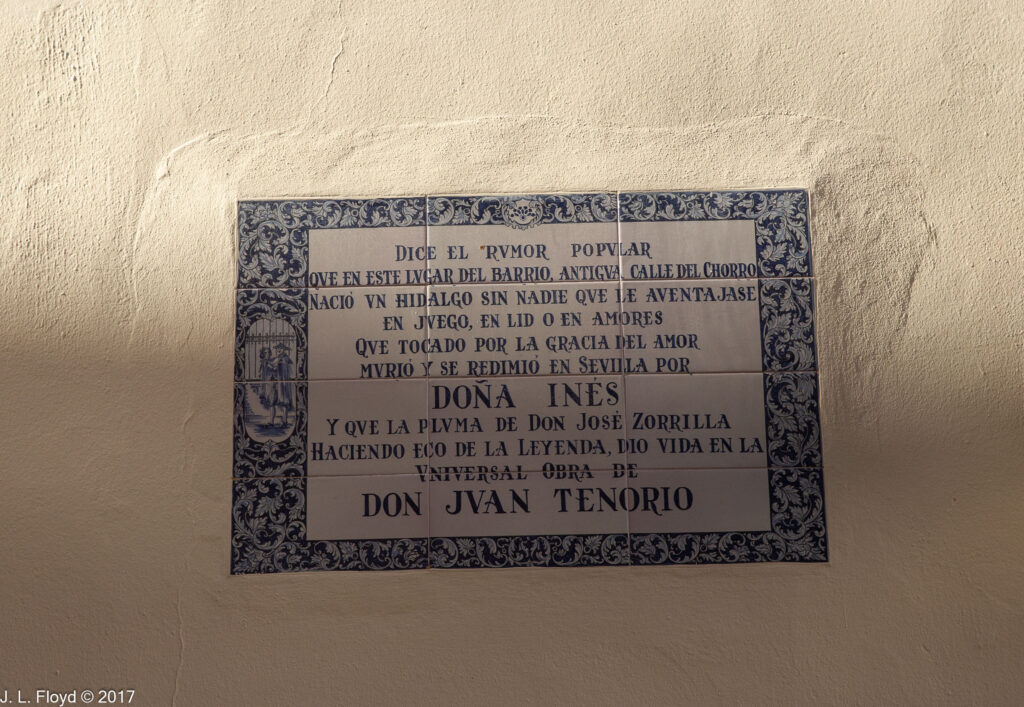
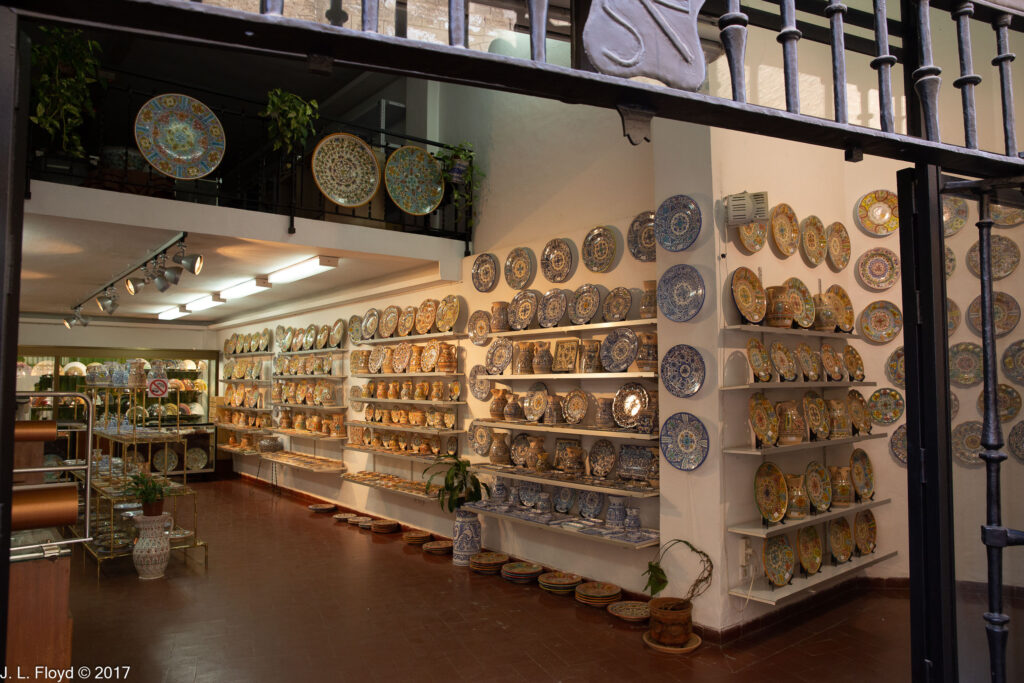
Moving on from Plaza de los Venerables, we shortly found ourselves in Plaza Doña Elvira, the supposed birthplace of another famous literary character, Doña Inés de Ulloa, whose love saves Don Juan from eternal damnation in José Zorrilla’s 1844 play. (I prefer the 17th-century version of the legend, and Mozart’s opera, in which Don Juan is carried off to hell by the ghost of Doña Inés’ father, whom he has slain.) Anyway, Plaza Doña Elvira is a beautiful square graced with colorful tiled benches, orange trees, and fountains, and lined with elegant mansions, hotels and restaurants.
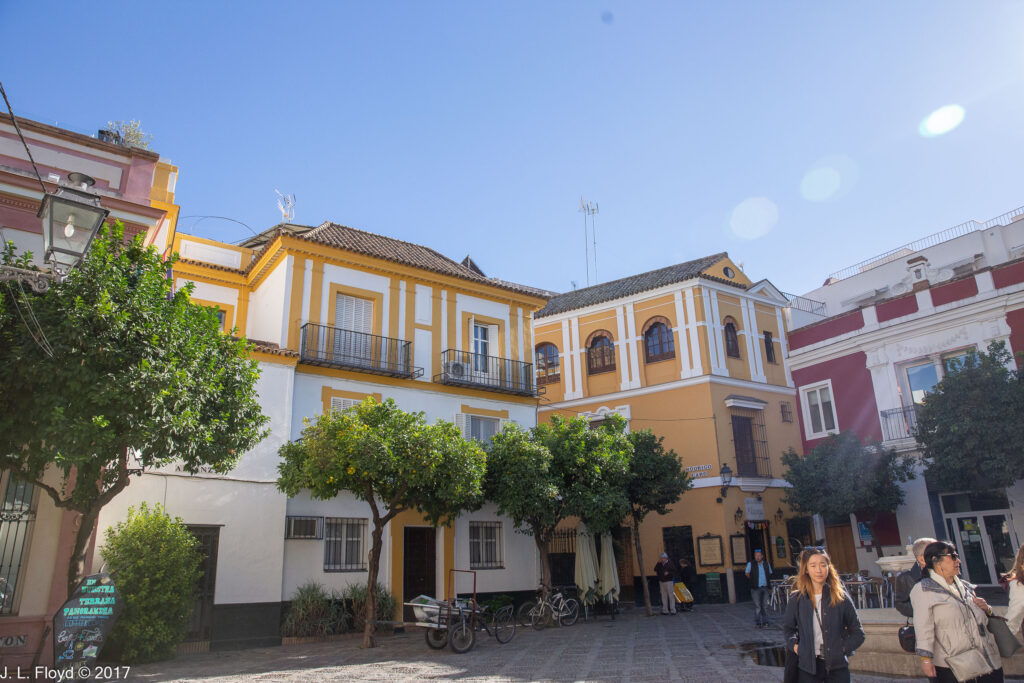
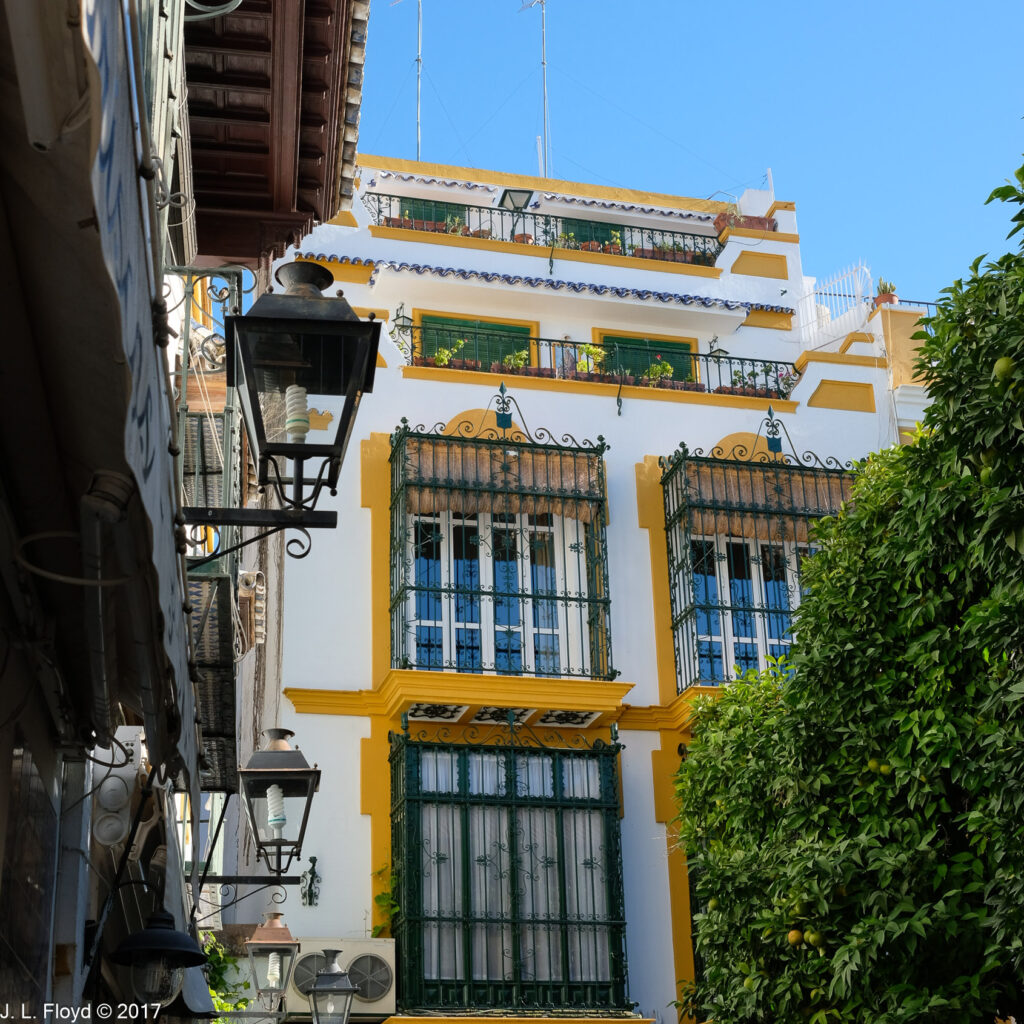
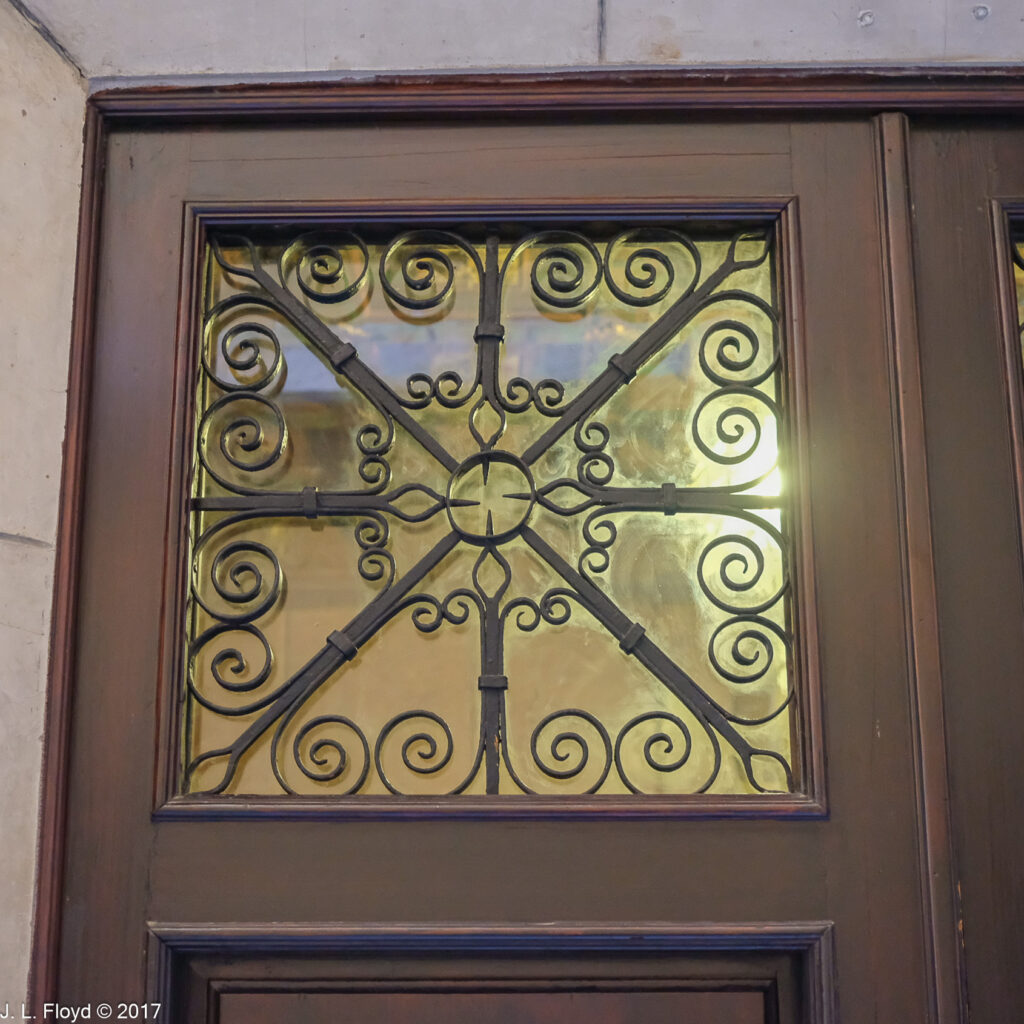
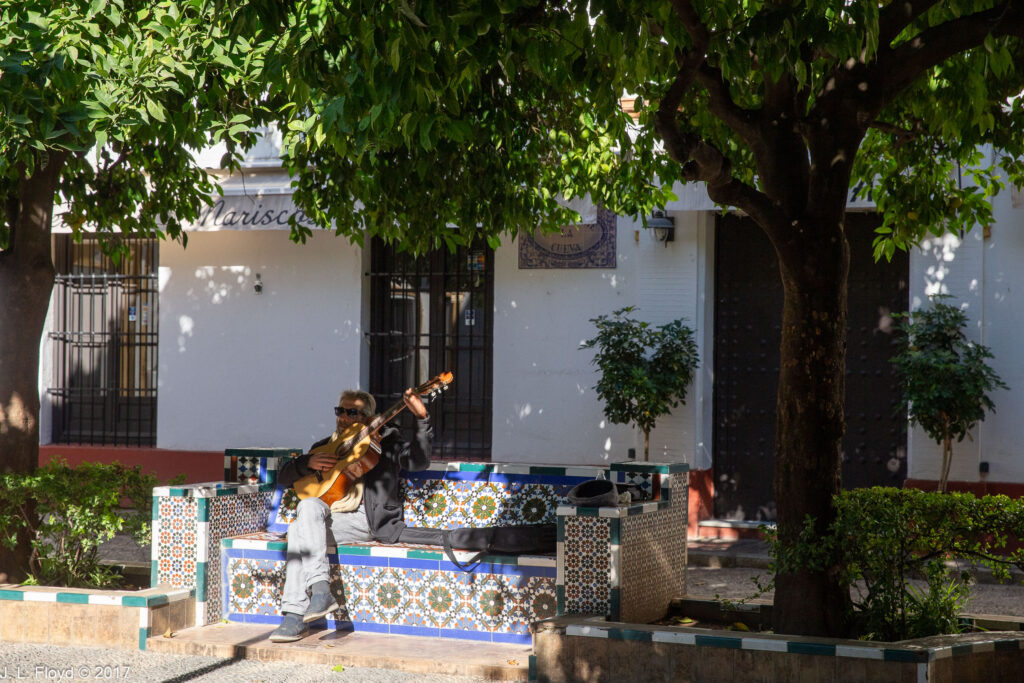
The ultimate goal of our pilgrimage through the Barrio Santa Cruz was the Cathedral, which is on the north side of the Barrio. We exited from the Barrio via the Patio de Banderas, where we passed the gate to the Alcázar, the royal palace, which was not on our tour itinerary but which I managed to visit later in the day. Finally we emerged onto the Plaza del Triunfo, next to the cathedral, and from there we continued onto the Plaza Virgen de los Reyes, where we lingered for a few moments to enjoy the sights before entering the Cathedral. Awaiting us on the Plaza were a number of horse-drawn taxis; I photographed one whose driver seemed quite proud of his rig, and I would have been pleased to oblige him by taking a ride, but time did not allow it. Aside from the Cathedral itself, there is plenty to see and shoot in the Plaza Virgen de los Reyes. There is a 4-star hotel, Doña María Sevilla, in a 14th-century palace; the Baroque Palacio Arzobispal, the Palace of the Archbishop of Seville, and my favorite fountain in Seville, the Fuente de la Farola – “Fountain of the Streetlight” – which indeed features an impossibly elegant streetlight topping the fountain.
